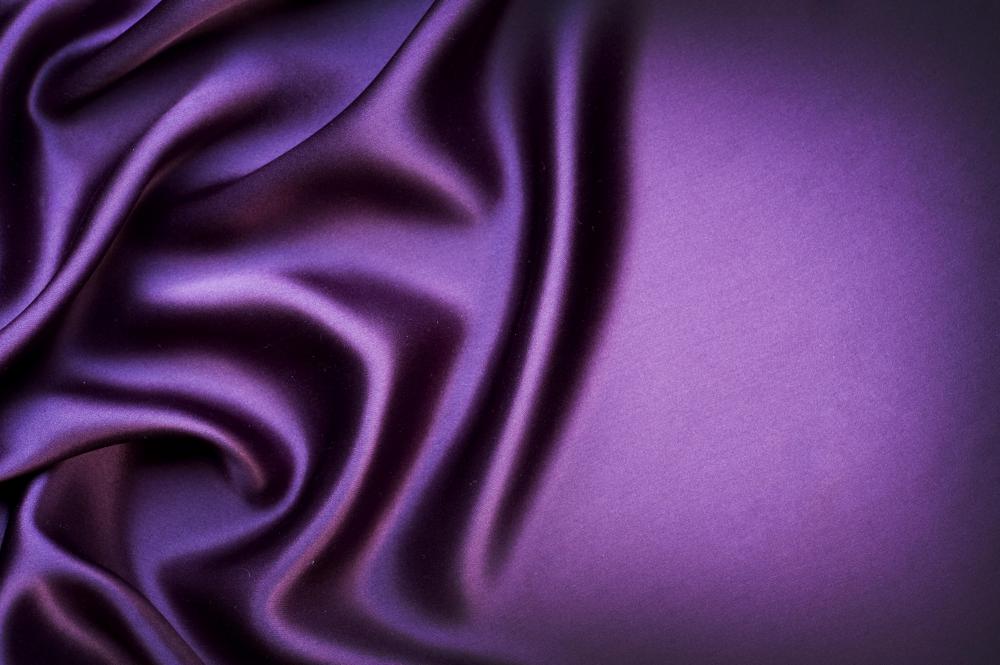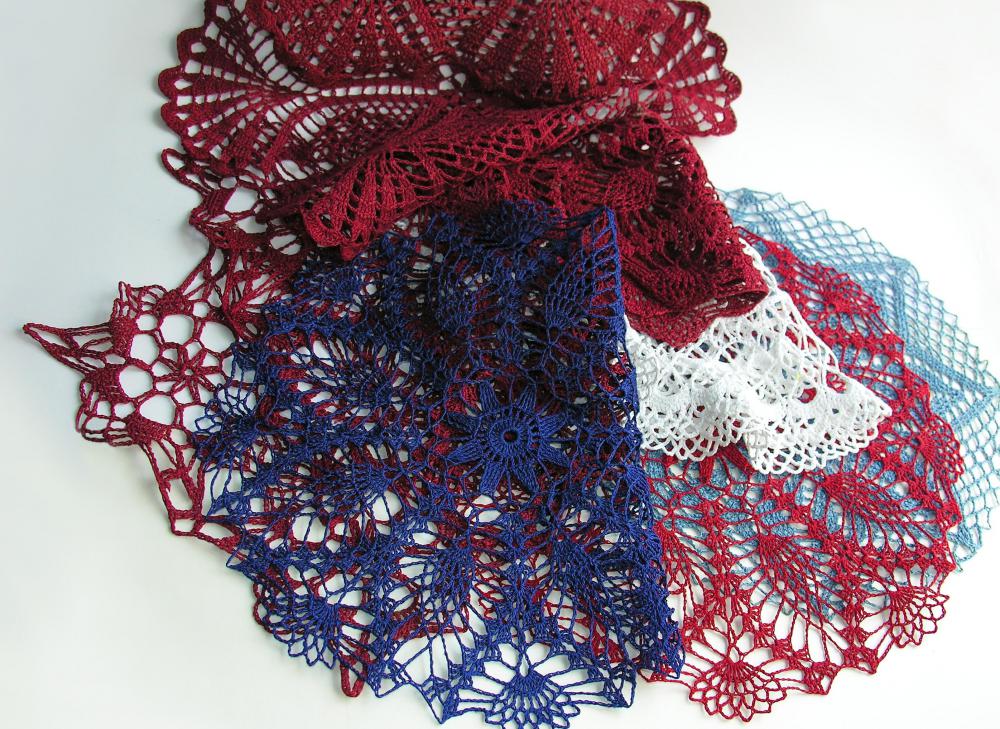At HomeQuestionsAnswered, we're committed to delivering accurate, trustworthy information. Our expert-authored content is rigorously fact-checked and sourced from credible authorities. Discover how we uphold the highest standards in providing you with reliable knowledge.
What is Silk Dupioni?
Sometimes known as dupion or douppioni, silk dupioni is created with the threads from two different silk worms. When two worms spin their cocoons close together, the fibers get tangled up; these naturally tangled fibers are then used together to make the silk thread. The thread is rougher than regular silk, and contains bumps and irregularities where the fibers from the two cocoons are combined. This fabric takes dye well and is usually easy to sew.
Silk dupioni has an advantage over some other types of silks, in that it tends to resist wrinkles, which helps to enhance the usability of the finished fabric. In addition, it also has a tendency to take creases very well, which can give the final product a crisp and formal appearance. As an added bonus, the fabric is totally reversible, so it is perfectly acceptable for both sides of the material to be visible.

At the same time, silk dupioni does have a couple of drawbacks. The material has almost no stretching ability, which means that using this fabric requires the need to be very exact in the measurements before cutting out any pattern. It is also naturally irregular in texture, and the edges may unravel.
Silk dupioni can be used in a number of different fabric creations. In the way of clothing, this fabric works well for flowing jackets, blouses, skirts, dresses, and bridal gowns. For home decorating, it can be utilized as drapery panels or other types of window treatments, table runners and cloths, and doilies for accent on tables and sofa backs and arms.

While dry-cleaning is generally recommended for silk dupioni, it is possible to hand wash sections of fabric before the material is cut and used in a pattern. When washed by hand, there is the chance of some shrinkage, and the fabric will most likely lose some of the crisp texture and a portion of the shimmering effect. For finished products constructed with silk dupioni, dry cleaning is definitely the best means of freshening the material.
AS FEATURED ON:
AS FEATURED ON:















Discussion Comments
Can this be used for ties?
Dupioni silk has a very stiff "hand" and acts like paper when it is under construction in my experience.
I find it wrinkles terribly and the wrinkles don't press out, so one shouldn't use steam to press it, nor press too much while constructing the garment or object.
Dupioni refers to the slub weave texture and relative coarseness of the fabric. It can be woven from a blend of fabrics. If the fabric is marketed as silk, all fibers would be silk. The thread is woven, warp and weft, with the courser silk yarn with chunks of the silk cocoon thrown in as the yarn is spun to give it more texture. So, dupioni is the weave structure and 100 percent silk is the fiber content unless declared otherwise.
Washing silk dupioni is a bad idea. It is a loosely spun fiber and a loosely woven fabric and will continue to lose its "hand" and stability with every wash. Raw silk noil has the same issue losing its size by shrinking in length rather than length and width. Dupioni weaves ravel so much they can disintegrate.
If dupioni silk is woven, can the mill actually say which percentage is natural silk and which is dupioni silk?
I bought some dupioni the other day. It doesn't really drape. It's rather stiff, but thin. Is this normal?
Dupioni silk is beautiful. I have had silk blouses (not dupioni) and I used to just hand wash them in cool water, dry them hanging in the shade and iron them and they looked wonderful. I bought some samples of dupioni silk to use in a crazy quilt project and prewashed them. They did lose a bit of the shimmery quality but still looked great after I ironed them. So nice, in fact, that I thought of making a whole quilt out of this fabric. But I definitely *don't* want to dry clean it. Would the dupioni silk continue to shrink after the first prewashing when it's all sewn together?
I wouldn't put my jeans in dryer but you put a silk dress in and expect it to come out perfect? Really?
I bought a silk dupioni dress last summer because I liked the drape of the material and the flowing cut to the hem. I really should have checked the care instructions on the label before washing it.
Normally, if I see a dress that I like but the label says, “dry-clean only,” I will not buy it. I hate going to the drycleaner and spending the extra money. I have a washer and dryer at home, and if I can't wash a garment there, I don't want it.
For some reason, I didn't even look at the label on this dress. I put it in the washer on gentle cycle, and I tossed in the dryer, too.
It shrank to the point that it wasn't even wearable anymore. All the sheen had gone out of it, and it looked like a child's dress.
It was used at least as far back as 15th century Florence. It was considered "seconds," to be sold at a lower price and with warnings that it wasn't high quality silk.
What? Colours don't influence drape.
This is helpful but we need the history of dupioni.
Very helpful. thank you.
Thank you for the article; really appreciate it.
excellent article, it was very useful.
History of Duopioni silk. When and where was it first made? But not history of silk, in general, just duopioni.
Post your comments